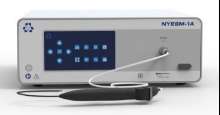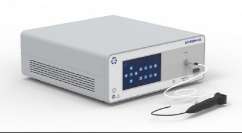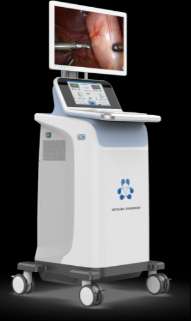Introduction
In the ever-evolving landscape of modern medicine, innovations continually shape the way healthcare is delivered and experienced. Among these innovations, disposable soft scopes have emerged as a remarkable advancement, revolutionizing the field of endoscopy and other medical procedures. In this comprehensive guide, we will embark on a journey to understand the world of disposable soft scopes, exploring their definition, advantages, diverse applications, and the pivotal role they play in enhancing patient safety and comfort during medical procedures.

Understanding Disposable Soft Scopes
- Attributes:
Disposable soft scopes, often referred to simply as “soft scopes,” represent a cutting-edge category of medical devices designed to provide flexible and minimally invasive solutions for healthcare professionals.
- Functions:
Definition: Let’s begin by unraveling the essence of disposable soft scopes, explaining their unique characteristics and purpose in medical practice.
Materials and Construction: Dive into the materials typically used in the construction of soft scopes, illuminating the engineering brilliance that enables their flexibility and functionality.
Advantages of Disposable Soft Scopes
- Attributes:
Soft scopes offer a myriad of benefits over their traditional counterparts, and it’s crucial to understand why they are gaining such prominence in the medical field.
- Functions:
Hygiene and Infection Control: Explore how disposable soft scopes significantly contribute to maintaining hygiene standards in healthcare settings and reducing the risk of infection transmission.
Convenience: Delve into the convenience factor and discuss how these scopes simplify medical procedures for healthcare professionals.
Cost-Effectiveness: Examine the economic advantages of disposable soft scopes, both in terms of initial investment and long-term savings.
Applications in Medical Procedures
- Attributes:
The versatility of disposable soft scopes allows them to be employed in a wide array of medical procedures. Let’s explore these diverse applications.
- Functions:
Endoscopy: Provide insights into how soft scopes are extensively used in gastrointestinal endoscopy, including esophagogastroduodenoscopy (EGD) and colonoscopy.
Bronchoscopy: Explain their role in bronchoscopy, particularly in examining and diagnosing conditions within the respiratory system.
Colonoscopy: Highlight their significance in colonoscopy procedures, offering advantages in terms of patient comfort and diagnostic accuracy.
Urology and Gynecology: Discuss how disposable soft scopes are making their mark in urological and gynecological procedures, such as cystoscopy and hysteroscopy.
Disposable Soft Scopes vs. Traditional Scopes
- Attributes:
To gain a comprehensive perspective, let’s compare and contrast disposable soft scopes with traditional reusable scopes.
- Functions:
Advantages of Disposable Soft Scopes: Highlight the benefits of using disposable soft scopes, including hygiene, convenience, and cost-effectiveness.
Advantages of Traditional Scopes: Acknowledge the strengths of traditional scopes, such as durability and potential cost savings in the long run.
Materials and Construction
- Attributes:
Dive deeper into the materials and construction methods used in disposable soft scopes and their role in ensuring flexibility and functionality.
- Functions:
Materials Used: Explain the specific materials, such as advanced polymers, that make disposable soft scopes highly flexible while maintaining structural integrity.
Manufacturing Techniques: Provide insights into the manufacturing techniques employed to create soft scopes, including extrusion and molding processes.
Benefits for Infection Control
- Attributes:
Infection control is a paramount concern in healthcare. Let’s explore how disposable soft scopes contribute to mitigating this concern.
- Functions:
Reducing Cross-Contamination: Discuss how the single-use nature of disposable soft scopes minimizes the risk of cross-contamination between patients.
Enhanced Sterilization: Explain how the design and materials of soft scopes make them easier to sterilize, ensuring the highest levels of patient safety.
Patient Safety and Comfort
- Attributes:
Enhancing patient safety and comfort is a key goal in modern healthcare. Explore how disposable soft scopes align with this objective.
- Functions:
Reduced Irritation and Trauma: Highlight how the flexibility of soft scopes translates into reduced irritation and trauma for patients during procedures.
Improved Diagnostic Accuracy: Discuss how patient comfort can lead to improved diagnostic accuracy, as patients are more likely to cooperate during examinations.
Environmental Considerations
- Attributes:
Environmental sustainability is a growing concern. Let’s address the environmental considerations associated with disposable soft scopes.
- Functions:
Impact of Disposability: Acknowledge the environmental impact of disposable scopes and discuss strategies for minimizing it.
Recycling Initiatives: Highlight ongoing efforts and innovations in recycling and sustainable manufacturing of medical devices.
Emerging Technologies and Innovations
- Attributes:
The world of medical devices is constantly evolving. Explore the latest technological advancements in disposable soft scopes.
- Functions:
Enhanced Imaging Technologies: Discuss innovations in imaging technologies, such as high-definition imaging and advanced sensors.
Remote Monitoring and Telemedicine: Explain how soft scopes are adapting to facilitate remote monitoring and telemedicine applications.
Conclusion
- Attributes:
In conclusion, summarize the key points discussed throughout the article and emphasize the pivotal role of disposable soft scopes in modern healthcare.
- Functions:
Key Takeaways: Provide a concise summary of the essential insights gained from the article.
The Future of Healthcare: Highlight the transformative potential of disposable soft scopes in shaping the future of medical procedures and improving patient care.
As we navigate the dynamic landscape of healthcare, disposable soft scopes stand as a testament to human innovation and the pursuit of safer, more comfortable, and more efficient medical procedures. With their flexible nature and diverse applications, they illuminate the path toward a brighter, healthier future for patients and healthcare professionals alike.




